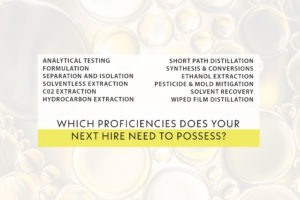
The Case for Rigorous Vetting in Laboratory Talent Acquisition
Hiring the right personnel in highly regulated and precision-driven industries like laboratory sciences is more than a wise business decision—it’s a compliance and operational imperative. The difference between a well-functioning lab and one plagued by errors, inefficiencies, or non-compliance often begins with the hiring process itself.
That’s why rigorous vetting in laboratory staffing isn’t just a best practice—it’s a necessity.
Why Vetting Matters in the Lab Environment
Hiring based solely on a polished CV and a good interview is risky—especially in roles that require adherence to standard operating procedures (SOPs), equipment handling, or familiarity with cGMP, ISO 17025, or other regulatory frameworks. Misjudging technical capability or reliability can lead to:
- Increased QC failures
- Contamination risks
- Delays in turnaround time
- Auditor findings and regulatory citations
A robust vetting process helps mitigate these risks by ensuring:
Technical Competency
A background in analytical testing, extraction, formulation, or equipment calibration must be demonstrated—not assumed. Hands-on assessments or project-based evaluations reveal actual lab proficiency.
Regulatory Alignment
Understanding documentation practices, chain-of-custody procedures, and lab safety protocols is essential. Vetting ensures candidates are not just trainable, but already compliant-minded.
Cultural & Workflow Fit
Labs operate with rhythm and precision. A technician who doesn’t align with your lab culture—be it collaborative, fast-paced, or innovation-driven—can disrupt team dynamics and slow productivity.
Lower Turnover & Training Costs
When technicians are properly matched to your lab’s specific instrumentation and processes, onboarding is quicker and retention is higher—especially when they already understand platforms like GC-MS, HPLC, ICP-OES, or ExtractionTek systems.
How to Effectively Vet Lab Candidates
A strategic vetting process doesn’t need to be complicated—it just needs to be intentional and evidence-based. Here’s how to fine-tune your approach for technical roles:
- Define the Role Precisely
Include required instruments, software proficiency, regulatory knowledge, and preferred testing methodologies (e.g., solvent extraction, terpene profiling, stability testing). - Use Multi-Step Screening
Go beyond the resume. Incorporate hands-on tasks, theoretical quizzes, or SOP simulations. - Verify Credentials
Ensure certifications (e.g., ASCP, OSHA 10/30, HAZWOPER) are up to date, and cross-check lab experience with references from previous lab managers or directors. - Assess Documentation Ability
Ask candidates to complete a mock chain-of-custody log or laboratory notebook entry—accuracy here is a predictor of audit-readiness. - Leverage Specialized Tools
Applicant tracking systems that support technical screening or partnerships with niche talent providers (like Vetted Better) streamline sourcing and reduce bad hires. - Consider Contract-to-Hire Models
For critical roles, a probationary period allows you to evaluate real-world performance before full commitment.
Common Vetting Pitfalls to Avoid in the Lab World
- Hiring on “Feel” Instead of Data
In technical environments, personality alone doesn’t get the job done. Skills must be measurable. - Skipping Reference Checks
Previous lab performance offers invaluable insight into documentation habits, calibration practices, and team interaction. - Underestimating Soft Skills
In labs where safety, cross-functionality, and communication are key, emotional intelligence and accountability matter as much as technical fluency. - Rushing to Fill a Vacancy
An urgent need shouldn’t override a structured vetting process. The cost of a mis-hire in regulated labs—especially during audits or high-volume seasons—is too great.







